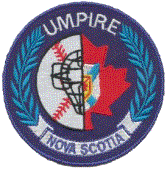- 0
Batter runs to first on dropped second strike
Umpire-Empire locks topics which have not been active in the last year. The thread you are viewing hasn't been active in 2010 days so you will not be able to post. We do recommend you starting a new topic to find out what's new in the world of umpiring.



Question
Blueclay
Here is the situation that happened last night during my sons little league game.
We were the visiting team
Home team was batting
Bases were loaded and one out
Batter then swings on what he thought was a dropped third strike, but it was only the second strike. Batter then runs to first. Catcher throws the ball to first as he himself was confused at this time. First baseman catches ball and now has two men at first; the runner that was on first and the batter that ran to first on the second strike. The other baserunners then ran home during the confusion. The runs counted and then the umpire had the batter come back and finish his at bat.
Question #1: Can you have two men on one base?
Question #2: How was this not called a dead ball as the runner only had two strikes?
Statement #1: If this is allowed, then why would I not teach my kids to do the same and just have then run on the first or second strike, confusing the defense, score a couple of runs and then have my kid go back home and finish his at bat?
Thanks,
Brett
Link to comment
Share on other sites
Top Posters For This Question
6
4
4
3
Popular Days
Oct 23
7
Oct 18
7
Oct 21
4
Oct 22
3
Top Posters For This Question
beerguy55 6 posts
Rich Ives 4 posts
Senor Azul 4 posts
Lou B 3 posts
Popular Days
Oct 23 2018
7 posts
Oct 18 2018
7 posts
Oct 21 2018
4 posts
Oct 22 2018
3 posts
Popular Posts
Kevin_K
When this happens, please post the video. I will enjoy watching the OHC come unglued, being ejected and the PU grabbing the stankiest end of any stick ever.
Rich Ives
Interspaced. The defense needs to know the situation.
BT_Blue
I completely agree. Especially if it is obvious they are trying to gain an advantage. What worries me is if someone reads this rule and decides if it happens 2 or 3 times in an 8u ballgame with player
24 answers to this question
Recommended Posts